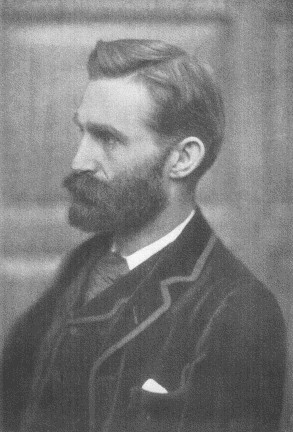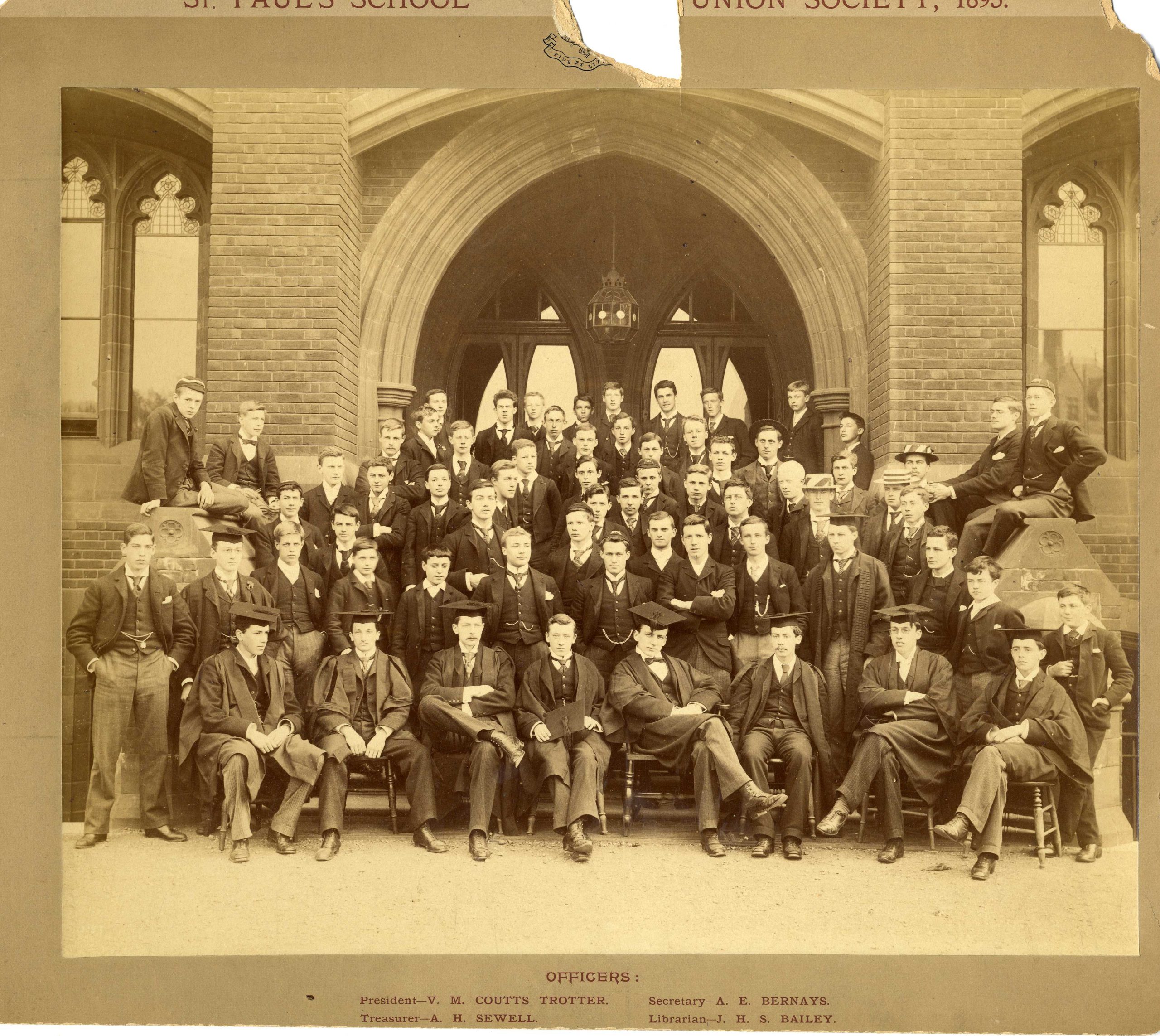Content warning: This post contains references to a dead body, which some readers may find upsetting. Reader discretion is advised.
For this month’s theme of ‘Mystery‘, we take a look at a strange unsolved case relating to a member of the Fabian Society, whose archives are held by LSE Library.
Case opened
Whilst making hay in the fields of Malvern in Worcestershire, student farmer John Harvey saw a body floating in a nearby pond. It was 12:30pm on Friday, 19th of August 1910. He sent for the police who retrieved a punt from a nearby boathouse and moved the fully dressed body – wearing a watch that had stopped at twenty-three minutes past eleven – to the bank. There were no marks of injury nor indications from the banks that anyone had fallen in. A few days later the body was identified as that of missing author, socialist, and passionate spiritualist investigator interested in telepathy and ghosts – Frank Podmore.

Rewind – 9 days earlier
Frank arrived at a cottage in Malvern for a short holiday. According to the witness statements of owners Fanny and Henry Cross, Frank “had always appeared cheerful and jolly”. For the next three days, he played golf on the Golf Links at Malvern Common. On the night he vanished, Frank headed out to get some fresh air. A neighbour, George Smith, saw Frank leave the house, who had said to him that he was going for “a short stroll”. George watched Frank walk off in the direction of Malvern Hills. This was the last time anyone saw Frank alive. By midnight a heavy thunderstorm had broken out.
The investigation
Over the next few days an extensive search was carried out across the Malvern Hills, with the local Boy Scouts getting involved. Some thought his body might be lying among the bracken or the trees. Relatives of Frank believed he might have climbed up the hill to watch the lightning effects, and in the dark may have fallen off one of the paths. Another theory was that he had suddenly lost his memory and was wandering around the district. Due to Frank’s interest in spiritualism and ghosts, there were no doubt many other theories.
The Berrow’s Worcester Journal (one of the longest running newspapers in the world, established in 1690) reports from the inquest:
“The Coroner drew the attention of the jury to the absolute absence of any motive for [the] deceased taking his own life. No evidence could be obtained as to how he came to be in the vicinity of the New Pool, or on any point which might assist them to solve the mystery of how he met his death”

Ernest Rhys, the author best known for being the founding editor of the Everyman’s Library series of classics, was friends with Frank and his wife Eleanor. In his memoirs, Rhys remarked that the last time he had seen Frank alive was when he had turned up unannounced at their house “with an air of a man under sentence”. Ernest further recounts how he later learned that Frank had been sacked from his job at the post office “because of his sadist propensities, which accounted for the card parties and his wife’s uncanny metamorphosis”. What was meant by “sadist propensities” seems unclear, although it is possible this was an allusion to Podmore’s sexuality.
The Fabian Society archives at LSE Library

Whilst the mystery of Frank Podmore’s death remains unsolved, his connection to LSE Library survives in the Fabian Society archives; Britain’s oldest political think tank. Founded in 1884, members of the Fabian Society would go on to found the London School of Economics and Political Sciences (LSE) in 1895.
Frank’s intense interest in ghosts and spiritualism caused him to eventually become estranged from the Fabian Society. However, he was considered a key early member of the Society and his own home was used for their early meetings. His legacy also lives on in the name “Fabian” Society, which was given by Frank himself. He was inspired by the warfare tactics of Roman statesmen Quintus Fabius Maximus Verrucosus Cunctator (born c. 280 BC). Fabius became known for the so-called “Fabian” strategy of avoiding frontal assault with the enemy and instead slowly wearing down the opponent. This mirrored the method by which the Fabian Society set out to achieve socialism; not by revolution or violent social upheaval, but by gradualist reform. The Fabian Society’s first pamphlet, “Why are the Many Poor?” further explains:
“For the right moment you must wait, as Fabius did most patiently, when warring against Hannibal, though many censured his deays; but when the time comes you must strike hard, as Fabius did, or your waiting will be in vain, and fruitless”
From Fabian Tract: “Why are the many poor?” (1884). Read online here.

LSE Library are the proud custodians of this enormous archive of the Fabian Society (which still exists today as a left-leaning think tank and affiliate to the Labour Party), containing nearly 1,000 boxes of correspondence, minutes, publications and ephemera. It documents the trajectory of this important organisation from its founding until the present day. The archives are open to all – see the catalogue record and information on how to book a seat in the Reading Room. The Fabian tracts and minute books have been digitised and are available on LSE’s Digital Library . Aside from Frank Podmore’s published work on spiritualism, you can read his report on seances at the Wellcome Collection.
References
The information regarding Frank Podmore’s last days alive and inquest are pieced together from a number of newspaper reports. The list of those newspaper reports is below. Ernest Rhys’ reminiscences of Frank and Eleanor Podmore come from his autobiography Everyman Remembers. Thanks to Worcestershire Archive and Archaeology Service for their excellent remote archive scanning service.
- A Malvern Visitor’s Disappearance, 1910, The Times 9
- Death of Mr. Frank Podmore, 1910, The Times
- Deaths, 1910, The Times
- Malvern Mystery — Author’s Body Found in Pool — The Inquest, 1910, Berrow’s Worcester Journal.
Written by Daniel Brambilla-Payne, Curator for Politics and International Relations, LSE Library.
Edited by Isabel Lauterjung, Blog Coordinator.



